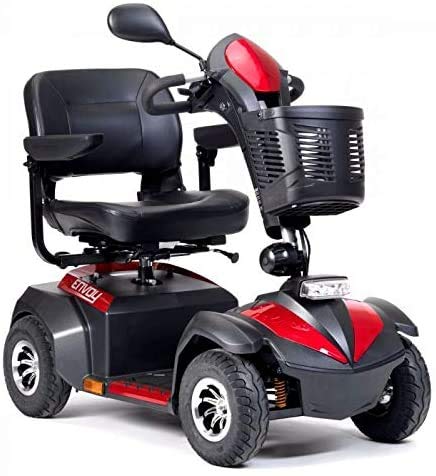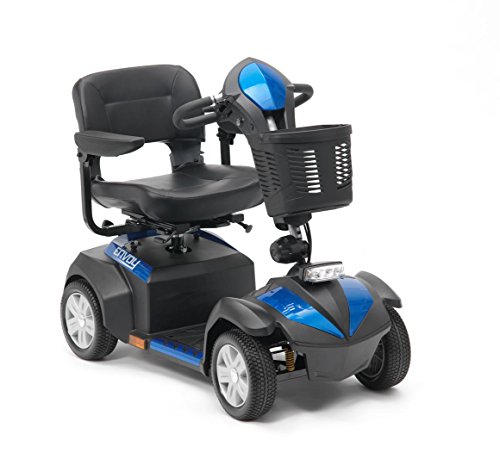Guide To Are Mobility Scooters Allowed On The Pavement: The Intermedia…
페이지 정보

본문
 Mobility Scooter Laws and Regulations - are mobility scooters allowed on the pavement mobility scooters uk - simply click the next internet page -?
Mobility Scooter Laws and Regulations - are mobility scooters allowed on the pavement mobility scooters uk - simply click the next internet page -?Mobility scooters let seniors remain independent at home to run errands, shop, and socialize without having rely on their family or ride services. It is crucial to know local laws and regulations regarding mobility scooters.
Scooters shouldn't be driven on cycle paths, motorways or bus routes. Scooters should not be parked an area that blocks pedestrians, or people with prams or pushchairs.
Legality
Mobility scooters are a popular option for those who need assistance with getting around. They are a way to be independent and aid many people. However, not everyone understands the rules and regulations that govern mobility scooters. There are many factors to take into consideration. These include if they are street legal, if they are allowed to be used on sidewalks and bike paths as well as what the speed limit for them is and if safety gear is required, and many more. By understanding the laws and rules that govern mobility scooters, you'll be able to make better informed decisions about how to make use of them.
While the answer to the question "are mobility scooters legal on the pavement mobility scooters?" is generally yes but it is important to remember that every state has its own laws and regulations governing the use of these vehicles. Illinois for instance requires that drivers of mopeds have an L or Class M license and pass safety courses. North Carolina law, on the other hand, allows mobility scooters to be used without any licensing or registration. They are also not allowed to be operated on specific roads, including interstates and highways.
The speed limitations for mobility scooters may vary from state to state however, in the majority of cases they are not allowed to exceed 4 mph on the pavement. This limit is set to ensure the safety of pedestrians. All scooters should be equipped with reflectors and light sources to increase visibility in low-light conditions.
It is not recommended that mobility scooters be used on roads. They are designed to be used on sidewalks. Utilizing them on roads could lead to dangerous situations. Therefore, you should only use your scooter on roads in the event that there isn't a suitable sidewalk in your area.
Remember that these laws were enacted by the majority of municipal governments to ensure safety. Mobility scooters move slower and are less visible than motorbikes or cars, which makes them more likely to be involved in accidents. A majority of these vehicles can't traverse over bumps or inclines on the sidewalk. This could cause injury to the rider.
Safety
It's not a secret that mobility scooters on pavements law scooters are becoming increasingly popular, bringing a renewed sense of freedom and independence to their users. However, since they are motorized vehicles that are commonly used in public areas that are populated by pedestrians it is important to keep in mind that these scooters pose a potential risk to other people walking along the sidewalk.
Fortunately, there are some things you can do to ensure that your scooter doesn't pose the risk to other pedestrians and best pavement mobility scooter users. Always be aware of your surroundings when you are riding a scooter. You should also be certain to give pedestrians the right of way, particularly when they suffer from visual or hearing impairments.
Furthermore, you must adhere to all of the same rules that apply to pedestrians when operating your scooter. It is important to obey traffic signals and signs and travel in the proper direction when using sidewalks, as well as not blocking other people's paths or causing any other obstructions when driving your scooter. In the end, if you decide to use your mobility scooter on the roads, you should always respect the traffic laws and never operate your vehicle on the highways or in any other places where the speed limit is greater than 25 miles per hour.
Mobility scooters aren't made to be used on busy roads or highways, so they shouldn't be used in these areas. Additionally, scooters are not permitted to be operated in bus lanes, or in "cycle-only" lanes, since these are reserved for bicycles.
When choosing a scooter, it's important to also consider the turning radius. The majority of scooters have a lower turning radius than cars. This makes them more able to maneuver through narrow spaces, like hallways and aisles of stores. However, this means they are less safe on uneven surfaces, such as sidewalks, so extra care should be taken when driving in these environments.
Pedestrians
Mobility scooters are categorized as pedestrian mobility devices. The majority of municipal regulations allow them to be used on sidewalks or pedestrian walkways. However, they must ensure that their EPAMDs come with the necessary safety features like reflective headlights that function and provide visibility in low-light or nighttime conditions. They should also avoid driving at a faster speed than pedestrians on sidewalks and be sure to be courteous to pedestrians who are sharing the same path of travel.
On the other hand, if there is no sidewalk available mobility scooter on pavement uk users might be able to operate their vehicles on neighborhood and local roadways. But, they should be aware that such use is not always legal in all areas particularly if they live in a gated community that has a homeowner's association (HOA) which may have specific rules for the use of mobility scooters.
Furthermore, if they are operating their mobility scooters on roads or local roadways it is recommended that they follow the general traffic laws and regulations, such as obeying traffic signals and crossing the street at the designated crosswalks. They should be aware of pedestrians in their surroundings, and put a priority on their safety and the safety of the others. For instance they can remove their scooters in crowded areas or in narrow spaces and use ramps or elevators to navigate around obstacles.
Despite their size, mobility scooters may be dangerous for pedestrians who are not aware of their presence. Therefore, it is essential for users of scooters to show consideration and give the right of way to walking pedestrians. They should also slow down or stop when they pass other pedestrians, particularly in busy areas and in bad weather, as they might not be able to see them or hear their approaching footsteps.
Additionally, since mobility scooters are not classified as motor vehicles, their users are not required to get an insurance policy or driver's license for the device. It is still recommended that they purchase insurance in order to ensure themselves against any accidents that may occur on the roads. The reason for this is that liability insurance could cover any costs resulting from injuries, property damage or other losses caused by the scooter's operator.
Parking
Mobility scooters are a popular solution for busy streets and pavements, providing users with more independence. They are not designed to replace walking, and they must be operated according to the guidelines that take the safety of pedestrians into consideration.
The first step is becoming familiar with the laws governing mobility scooters in your area. This includes knowing local regulations and rules regarding speed limits, parking, and no-ride zones. This means using the most efficient methods of operation when using the scooter. This includes giving pedestrians the right of way, avoiding pedestrian friendly areas, and wearing the appropriate safety gear.
Class 2 mobility scooters are able to be used up to 4 miles per hour on sidewalks and other spaces that are pedestrian-friendly, but cannot be used in 'cycle-only' lanes. Additionally, it is important to park your scooter where it does not block the pathway of other pedestrians, such as those with prams and pushchairs. It is also important to stay clear of obstructions on the road because they can be dangerous or hinder the scooter's performance.
While it's not legally required, it is recommended to wear a helmet when driving your mobility scooter. This will help keep you safe from injuries in the event of an accident. It can also improve your safety on the road. It is also recommended to install reflectors and lights on your scooter, especially if you drive it at night or in adverse weather conditions.
Understanding the laws and regulations governing mobility scooters in your area is the next step. These laws and regulations vary from state to state, but they all regulate the speed at which mobility scooters are allowed to use public roads. A lot of these vehicles are not designed to operate at a rapid speed, which makes them more susceptible to accidents. It's also not advisable to ride on a scooter while driving because it could pose a danger to both the driver and other road users.
Certain states also require that you pay for a driving license in order to operate the mobility scooter. While this is not the situation in Nevada however, it's essential to know the local laws before you purchase an electric scooter.

- 이전글The Secret Secrets Of Goethe Certificate A1 25.04.11
- 다음글See What Window In Door Tricks The Celebs Are Utilizing 25.04.11
댓글목록
등록된 댓글이 없습니다.

